The Short- and Long-Term Case for European Small Caps


There’s revitalized interest in Europe, as investors look away from stretched valuations in the U.S. to lower valuations across the world.
Many focus on U.S. large caps as being an expensive market, but perhaps this is even more true for small-cap indexes.
Here’s a table that looks at trailing 12-month valuations across U.S. and European indexes:
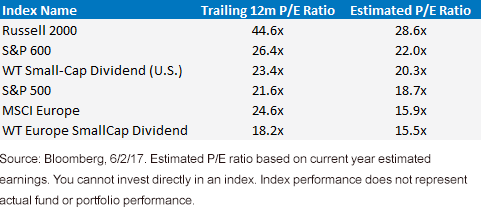
For definitions of indexes in the chart, visit our glossary.
Where in the Economic Recovery Cycle Is Europe?
Josh Brown made a comment on Twitter about current European investment prospects: “Screaming buy. It’s 2012 there.”1
If it is truly 2012 in Europe with more catch up in the economy to come, one should optimize exposure to the European economic growth cycle.
When thinking about geographic revenue exposures, the chart below provides some color on the different sources of revenue for large caps and small caps, a consideration for investors that have a certain macroeconomic view.
Large-cap Europe often tilts exposure to more global, growth oriented companies and the global business cycle prospects. Conversely, small-cap Europe derives more of its revenue and profits from the local European economies.
Geographic Revenue Exposure as of 4/30/17
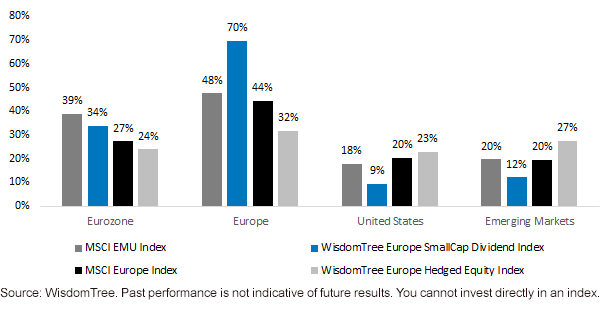
The Longer-Term Case for Small Caps?
A continued economic recovery could support the short-term case for European small caps, but what about the long-term case?
We’ve long heard the research that there is a small-cap value premium. Was this true for Europe?
Absolutely.
Data from Fama-French shows the long-term compounding of European small-cap value versus small-cap growth to be dramatic.
European small-cap growth had negative returns over the last 30 years, while small-cap value compounded over 10.4% per year.
Cumulative Returns to Europe Small-Cap Growth vs. Value
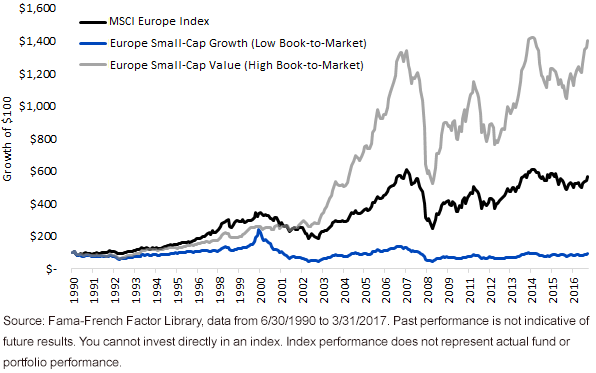
The 5x5 matrix for size x valuations that Fama-French produces for Europe supports a clear long-term case for European small caps.
Long-Term Returns of European Factor Portfolios
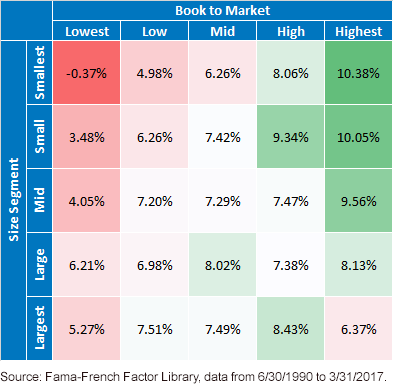
Even over the last decade, which saw a growth-driven market particularly for large caps, European small caps performed well.
10-Year Returns of European Factor Portfolios
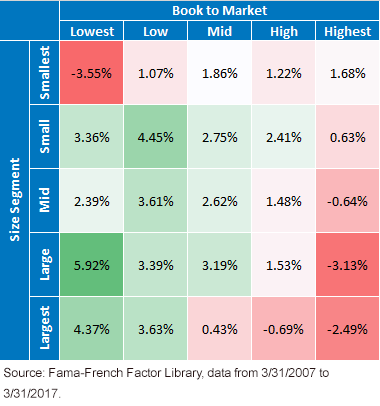
The WisdomTree Europe SmallCap Dividend Index (WTESC) tilts exposure to these European small-cap value stocks.
The Index launched in 2006 and has a strong 10-year track record compared to traditional large-cap market cap benchmarks.
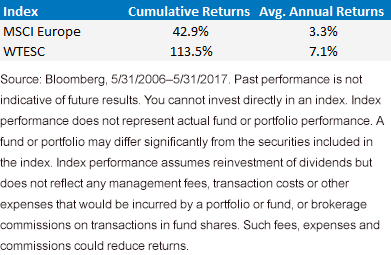
1https://twitter.com/ReformedBroker/status/867319485363081219.
Important Risks Related to this Article
Investments focused in Europe increase the impact of events and developments associated with the region, which can adversely affect performance.
Jeremy Schwartz has served as our Global Chief Investment Officer since November 2021 and leads WisdomTree’s investment strategy team in the construction of WisdomTree’s equity Indexes, quantitative active strategies and multi-asset Model Portfolios. Jeremy joined WisdomTree in May 2005 as a Senior Analyst, adding Deputy Director of Research to his responsibilities in February 2007. He served as Director of Research from October 2008 to October 2018 and as Global Head of Research from November 2018 to November 2021. Before joining WisdomTree, he was a head research assistant for Professor Jeremy Siegel and, in 2022, became his co-author on the sixth edition of the book Stocks for the Long Run. Jeremy is also co-author of the Financial Analysts Journal paper “What Happened to the Original Stocks in the S&P 500?” He received his B.S. in economics from The Wharton School of the University of Pennsylvania and hosts the Wharton Business Radio program Behind the Markets on SiriusXM 132. Jeremy is a member of the CFA Society of Philadelphia.

